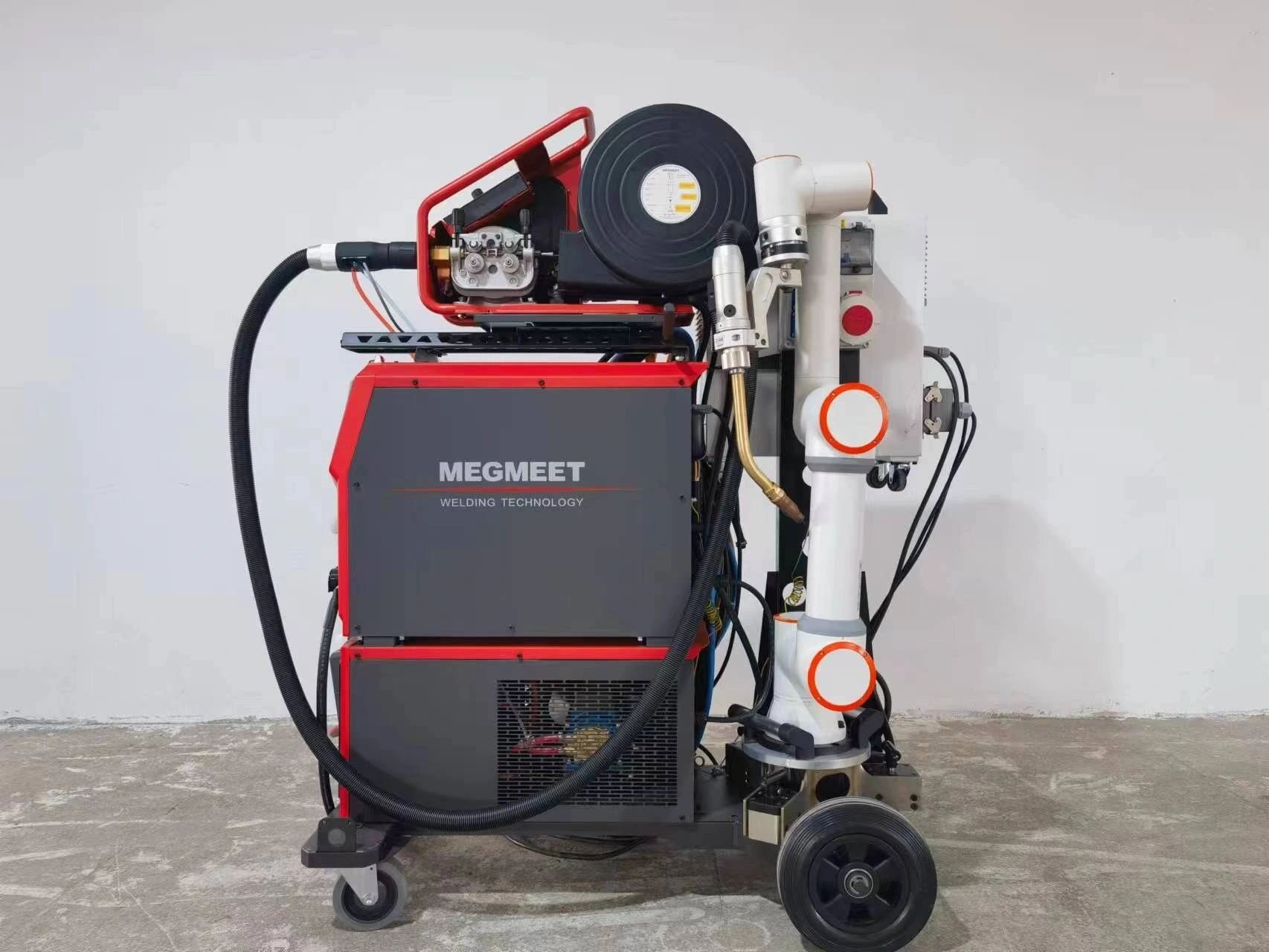I. What is Cobot Welding?
Cobot welding is an innovative approach that combines the precision of robotic welding with the flexibility of human collaboration. Unlike traditional industrial robots, Cobots are designed to work safely alongside human operators without the need for physical barriers. This synergy enables higher efficiency, improved safety, and consistent weld quality.

Key Features of Cobot Welding:
Collaboration: Cobots work seamlessly with human welders, enhancing productivity without compromising safety.
Flexibility: Easy reprogramming allows Cobots to adapt to various welding tasks and materials.
Safety Sensors: Advanced sensors detect human presence and adjust operations to prevent accidents.
Intuitive Programming: User-friendly interfaces simplify teaching Cobots new welding tasks.
II. Why Cobot Welding?
Increased Efficiency: Cobots operate with consistent speed and precision, reducing cycle times by up to 30%.
Enhanced Safety: Built-in sensors reduce workplace accidents by 50% compared to traditional welding methods.
Consistent Quality: Cobots maintain weld quality and reduce defects by 25% due to their repeatability.
Cost Savings: Initial investments in Cobots yield an average ROI of 200% within 5 years due to reduced downtime and rework.
Adaptability: Suitable for various materials and welding positions, Cobots are ideal for diverse applications.
III. Applications of Cobot Welding
1. Automotive Industry:
Chassis and Body Panels: High-speed, precise welding for vehicle components.
Engine and Exhaust Parts: Consistent weld quality for critical components.
2. Aerospace Industry:
3. Shipbuilding Industry:
Hull and Deck Welding: Efficient welding of large, complex structures.
Pipe and Panel Welding: Consistent welds for marine-grade materials.
4. Metal Fabrication:
IV. How to Choose the Right Cobot Welding System
1. Payload Capacity:
Ensure the Cobot can handle the weight of the welding torch and additional tools.
2. Reach and Working Envelope:
Select a Cobot with sufficient range to cover your welding area.
3. Programming Interface:
Opt for systems with intuitive teaching pendants or graphical interfaces.
4. Compatibility:
Ensure the Cobot is compatible with your existing welding equipment and tools.
5. Safety Features:
Check for certified safety sensors and emergency stop mechanisms.
V. Implementing Cobot Welding
1. Integration:
2. Training:
3. Optimization:
VI. Megmeet’s Cobot Welding Solutions
Megmeet offers a range of advanced Cobot welding systems designed to meet the demands of modern manufacturing. Our solutions include:
2. Collaborative Welding Interfaces:
3. Customizable Options:
Visit Megmeet-welding robotic and automatic welding solutions to explore our full range of robotic welding solutions.
VII. FAQs About Cobot Welding
1. What industries benefit most from Cobot welding?
Automotive, aerospace, shipbuilding, and metal fabrication industries.
2. How does Cobot welding improve safety?
Through advanced sensors and collaborative design, we can reduce accident risks.
3. Can Cobots weld aluminum?
Yes, Cobots excel at welding aluminum due to precise control and consistent heat management.
Conclusion
Cobot welding represents a significant leap forward in welding technology, offering a perfect blend of human expertise and robotic precision. With its ability to enhance efficiency, safety, and consistency, Cobot welding is transforming industries worldwide. Megmeet’s advanced robotic and Cobot welding systems are designed to meet the evolving needs of manufacturers, ensuring high-quality results and improved productivity.
Contact Megmeet today to explore how our Cobot welding solutions can elevate your manufacturing process.
Related articles
1. Robotic TIG Welding Improves Speed, Quality, and Efficiency
2. What are the importances of Robotic Welding Systems In Industries?
3. How to Improve Robotic Welding Performance?
4. Robotic Welding & Complete Automation Solutions
5. Manual Welding VS. Robot Welding




